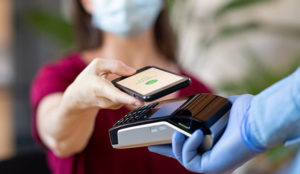
It’s a universal reality: Customers dislike waiting on hold. Now call-backs and virtual queuing are changing all that.
“Our basic mission is to improve the call center experience,” Shai Berger, CEO and cofounder of Fonolo, told CRM Buyer. “The heart of what we do is replacing hold time with a call-back.”
Benefits All Around
Call-backs benefit customers, most of whom would rather not be tied up listening to grating music or repetitive reassurances of their importance to the company. They also benefit call centers, which don’t have to tie up phone lines and other resources with callers on hold.
“Call-backs are a win-win, benefiting both company and consumer,” Adam Goldkamp, chief operations officer with GetHuman.com, told CRM Buyer.
“From the consumer standpoint, they don’t have to waste time waiting on hold as someone will call them when they are ready to speak to them,” he said.
“From the company standpoint, we’ve found that customers that use call backs aren’t as angry as those that are subjected to long wait times,” continued Goldkamp. “In general, it works well for both sides, because both consumer and call center worker can more easily work together to solve the issue that needs to be resolved.”
Call-backs could well permanently change the nature of customer and call center interactions.
“The bad call center experience has been with us for decades,” said Fonolo’s Berger. “Now [setting up call-backs] is easier with cloud-based services … . You have smartphones in everyone’s pocket, so it’s a really exciting time in the space. It’s a fascinating collision between the traditional call center and new technologies.”
Call centers using call-back technology benefit because their infrastructure is freed up to handle the calls that are live at any given moment.
“You’re not tying up phone lines and infrastructure,” said Robert Townsend, senior product manager for virtual contact centers with 8×8. “You have a much richer understanding of who’s trying to reach you and who that customer is, and you’ve authenticated who they are.”
Virtual Queuing
Call-backs can be arranged through a voice menu, or they can be arranged via virtual queuing through a website or mobile app, eliminating the need for the interactive voice menu entirely.
“Once you have a screen and keyboard in front of you, why would you ever want to go through a voice menu?” Townsend asked. “If you’ve logged in, you don’t even have to put in your phone number again.”
Call-backs can be targeted specifically for the type of agent or help that a customer needs, making the entire process of linking the right agent with the customer more streamlined and efficient.
Web-based queuing, in particular, allows callers to sort through a visual menu to find the help they need, eliminating the need for IVR.
“There’s a huge wealth of information available about a customer already logged into a site, and that information can be used for routing to get to the right support resource,” said Townsend.
“It saves you the tyranny of having to press one for that or two for that,” he remarked. “The Web can know if there are agents available. The Web can know what you are likely to want to talk about. Web contact puts you in the queue, and then you get called back. That information is used to do some intelligent routing and pick the best possible agent.”
Calling Back in the Future
While the percentage of call centers offering call-backs is still relatively small, it is likely to increase as customers come to expect the option.
“We hope there will be greater adoption of call-back technology over time,” said Goldkamp.
No matter how many questions can be answered virtually, after all, sometimes customers just need to talk to a person — and call-backs make arranging that interaction easier and more efficient.
“I think that the importance of live agent interaction has never been greater,” said Fonolo’s Berger. “Surveys show that when people have a complicated issue, they really want to talk to an agent, and that’s where real problems get resolved. No one calls to check their balance, but the calls that remain are when people really get stuck with something, and those are the interactions that make or break a brand.”
























































You’ve GOT to be kidding … offering to call people back as an option to them instead of waiting "on hold" is an innovation?? In the customized voice systems we’ve been designing and building for clients for MORE THAN TWENTY YEARS, we’ve offered this "innovation" many times – as a relatively small part of MUCH more robust systems! This is kindergarten-level stuff …
And … the "TYRANNY of having to ‘press one for this or two for that’"?? Pardon me while I barf …
Both the supplier of this "wonderful new service" and the author of this story clearly have no idea of any prior art in the field in which they are apparently presenting themselves as "knowledgeable" (NOT!). It might have benefitted both to do a little checking before going to the trouble of creating the service … or writing about it.